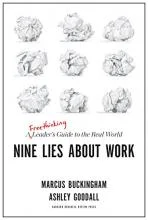Successful teams typically have multiple factors working for them. On a perfect day, they communicate and collaborate well, they respect diverse opinions and ideas, they recognize and appreciate each other’s contributions, and they have leaders who create, protect, and nurture an environment in which the team can thrive.
Of course, not all days are perfect, and even the best teams get stuck from time to time. When that happens, it’s helpful to have a base of knowledge to draw from to overcome challenges quickly.
[ Are you making decisions in the best way? Read also: 4 styles of decision-making: A leader's guide. ]
Even if your team is far from perfect, you may be only a mindset shift or practical move away from developing a more cohesive, collaborative – and ultimately, successful – group. We’ve rounded up eight books that can help you and your team get there.
The 5 Languages of Appreciation in the Workplace: Empowering Organizations by Encouraging People

By: Gary Chapman and Paul White
Book description (via Amazon): “This book will give you the tools to improve staff morale, create a more positive workplace, and increase employee engagement. How? By teaching you to effectively communicate authentic appreciation and encouragement to employees, co-workers, and leaders.”
Why you should read it: In romantic relationships, everyone has a love language – how they prefer to give and receive love. Similarly, at work, everyone has an appreciation language. And when supervisors and colleagues understand each others’ primary and secondary languages, workplace relationships dramatically improve, argue Chapman and White. This book provides an assessment to help teams determine their appreciation language, and specific actions based on each language.
Nine Lies About Work: A Freethinking Leader’s Guide to the Real World

By: Marcus Buckingham and Ashley Goodall
Book description (via HBR): “With engaging stories and incisive analysis, the authors reveal the essential truths that freethinking leaders will recognize immediately: that it is the strength and cohesiveness of your team, not your company's culture, that matter most; that we should focus less on top-down planning and more on giving our people reliable, real-time intelligence; that rather than trying to align people's goals we should strive to align people's sense of purpose and meaning; that people don't want constant feedback, they want helpful attention. This is the real world of work, as it is and as it should be.”
Why you should read it: This book challenges long-held wisdom about leading teams – that leaders must give constant feedback, both positive and negative; that difficult conversations are uncomfortable, but necessary. According to the authors, these ideas and other faulty assumptions – nine, to be exact – actually cause disfunction and frustration among teams. Read this book to for a dose of realism for leaders and teams.
Driven by Difference: How Great Companies Fuel Innovation Through Diversity

By: David Livermore
Book description (via Amazon): “Diverse teams are far more creative than homogenous teams – but only when they are managed effectively. ‘Driven by Difference’ identifies the management practices necessary to minimize conflict while maximizing the informational diversity found in varied values and experiences.”
Why you should read it: Although many companies attempt to bring more diversity to their teams, not all see increased results from doing so. Livermore draws on diversity success stories from Google, Alibaba, Novartis, and other companies to reveal the five key elements that determine whether culturally diverse teams succeed – or become gridlocked due to their differences.
Leaders Eat Last: Why Some Teams Pull Together and Others Don't

By: Simon Sinek
Book description (via Amazon): “Too many workplaces are driven by cynicism, paranoia, and self-interest. But the best ones foster trust and cooperation because their leaders build what Sinek calls a ‘Circle of Safety’ that separates the security inside the team from the challenges outside. Sinek illustrates his ideas with fascinating true stories that range from the military to big business, from government to investment banking.”
Why you should read it: We recently described teams that lack emotional intelligence as “cutthroat.” Sinek would argue that cutthroat teams also lack great leaders. In his work with organizations around the globe, Sinek noticed some key differences between teams that trust each other and teams that are doomed to fail. He breaks these differences down in this book and offers advice for leaders to build more trust into their teams.






